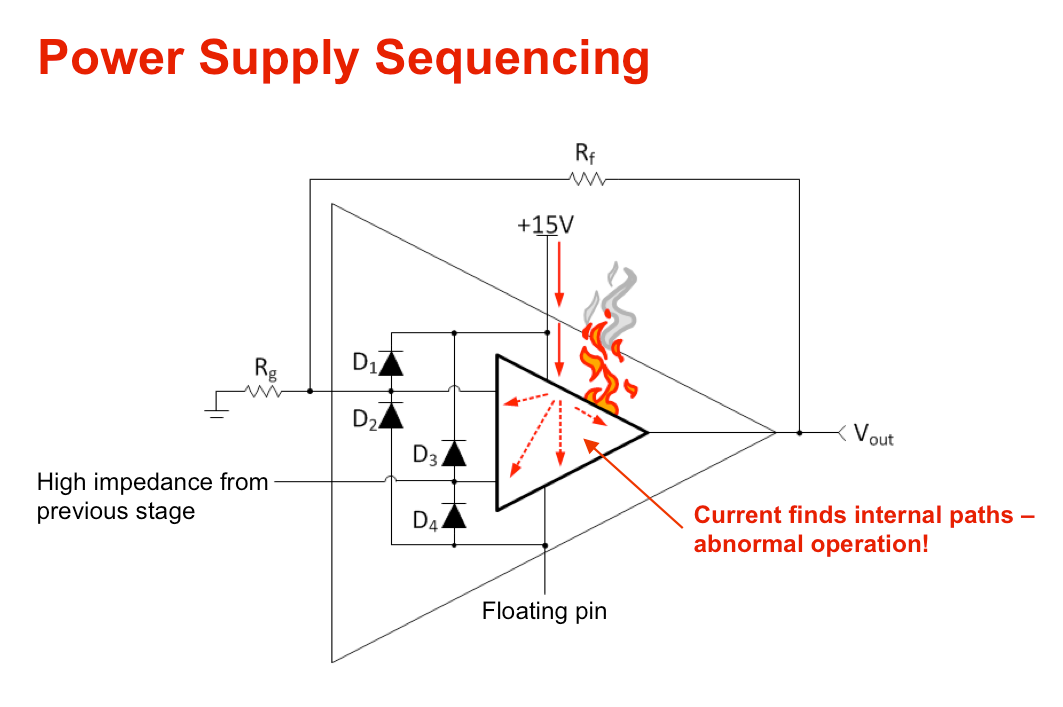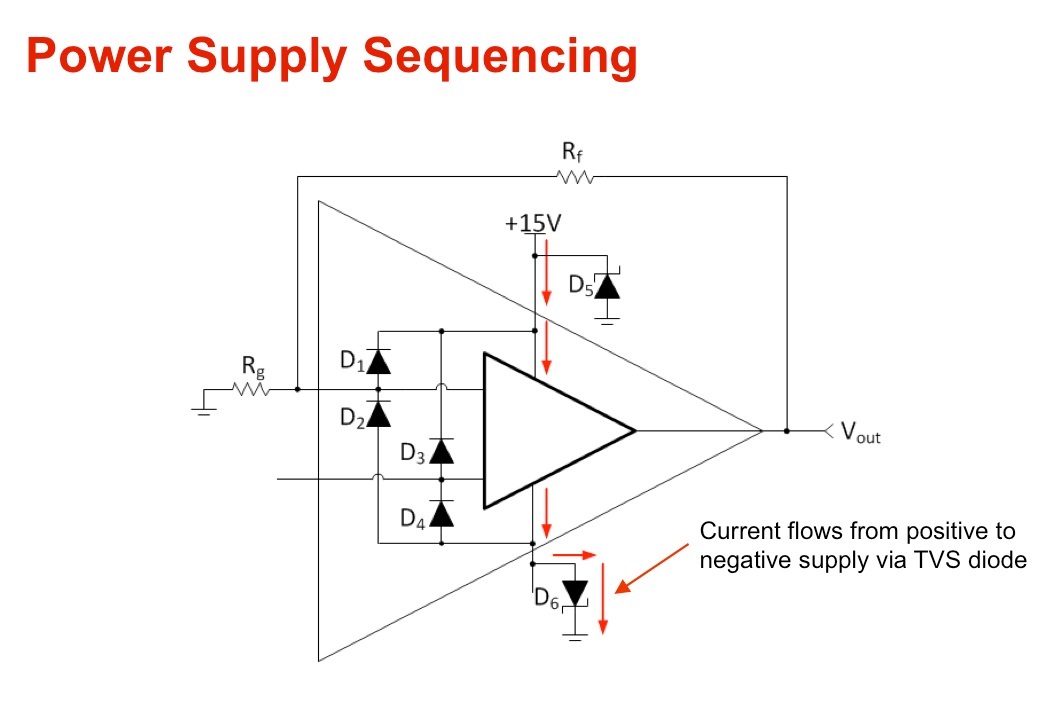Customer is using OPA2192 and has discovered a problem.
We noticed that occasionally the offsets were bad after running our offset correction routine. After investigating the problem, we realized that when we shorted the input to the channel, the offset of the OPA2192 shifted by about 400uV (not always, just sometimes). Our offset correction routine would zero the output of the channel with this input offset. When we cycled power, the offset of the OPA2192 would become very small, and the channel output offset would then change by the 400uV multiplied by the channel gain, causing failures.
We eventually replaced the OPA2192 at the input of the amplifier with a competitor's opamp (ADA4610), and the problem then moved to the next OPA2192 in the amplifier. We now knew that the OPA2192 had a problem. We know that the opamp has an electronic trim which is applied at the factory. We suspect that the trim gets reset by some mechanism involving changing the input suddenly, and that the proper trim is re-applied on the next power cycle. I do not think that the inputs to the OPA2192 ever go above the positive supply or below the negative supply. FET switches in front of the OPA2192 would clamp the input excursions at the supply voltage.
We then replaced the OPA2192's on the board with new parts that had a different date code. The module now works correctly and we can't make it fail.
The parts that failed had this date code:
53H
Z4W4
The parts that work have this date code:
57H
ZG91
The bad parts were sent to the customer as samples. The good parts were obtained through distribution. Has TI seen anything like this? If so, has it been fixed? If you need more information please let me know.




